In the last blog post you have read, and seen, the latest updates from the raised beds at TU. Yet some tandems are also making progress outside of the TU grounds.
Triqi, Anna and Fiona, for instance, have started their guerrilla gardening experiment in early June:

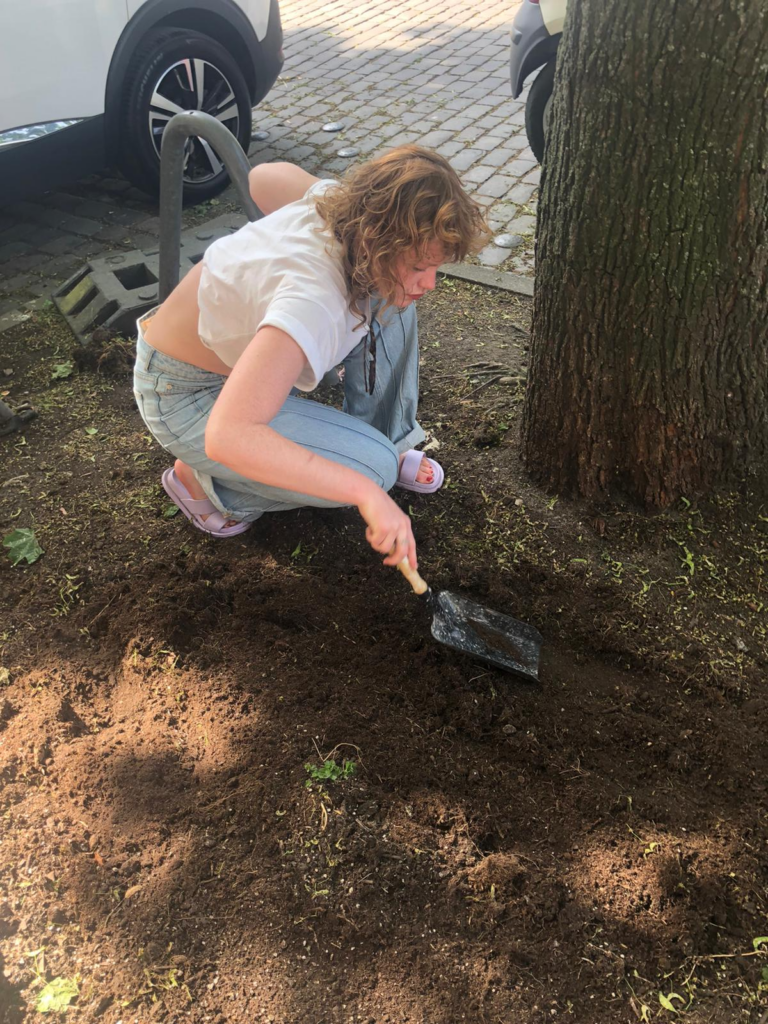
Under the premise of observing, if and how much fences and signs protect guerrilla gardens the team has created/chosen 4 experimental sides:
- No fence, no sign
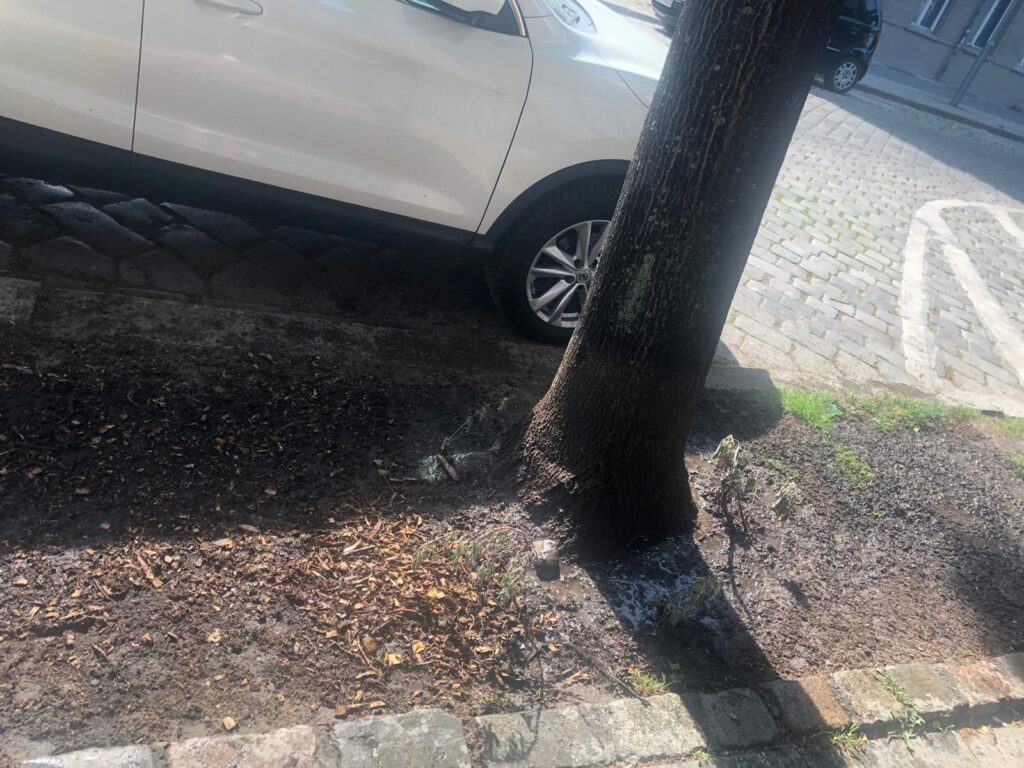
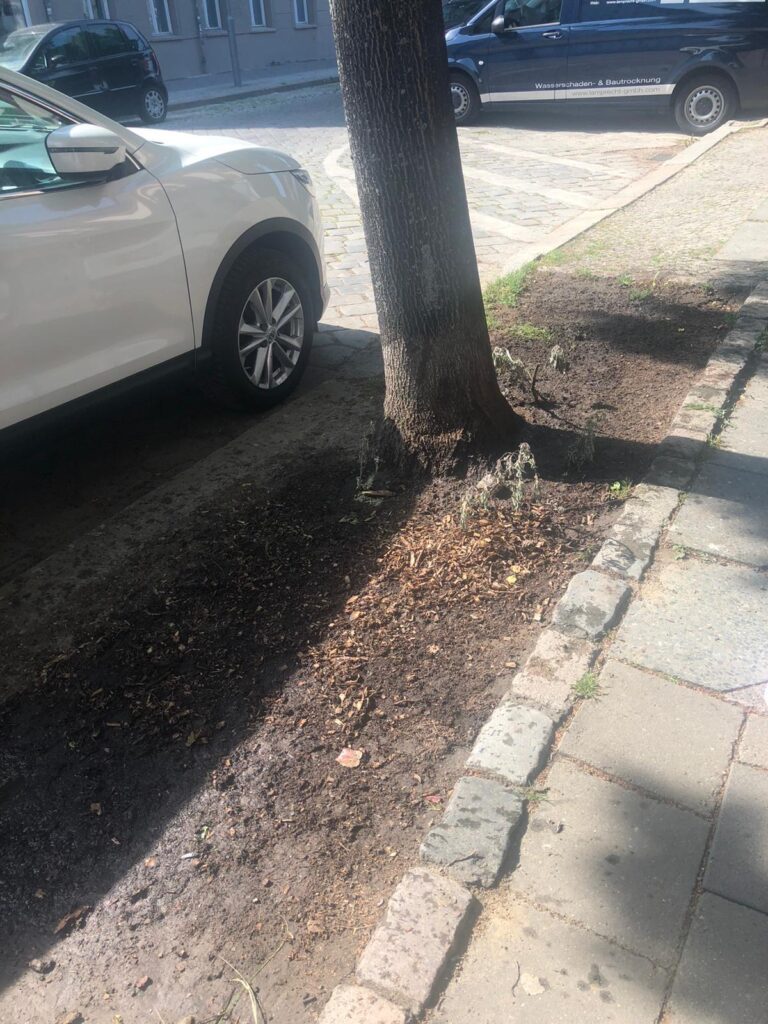
2. No fence, sign
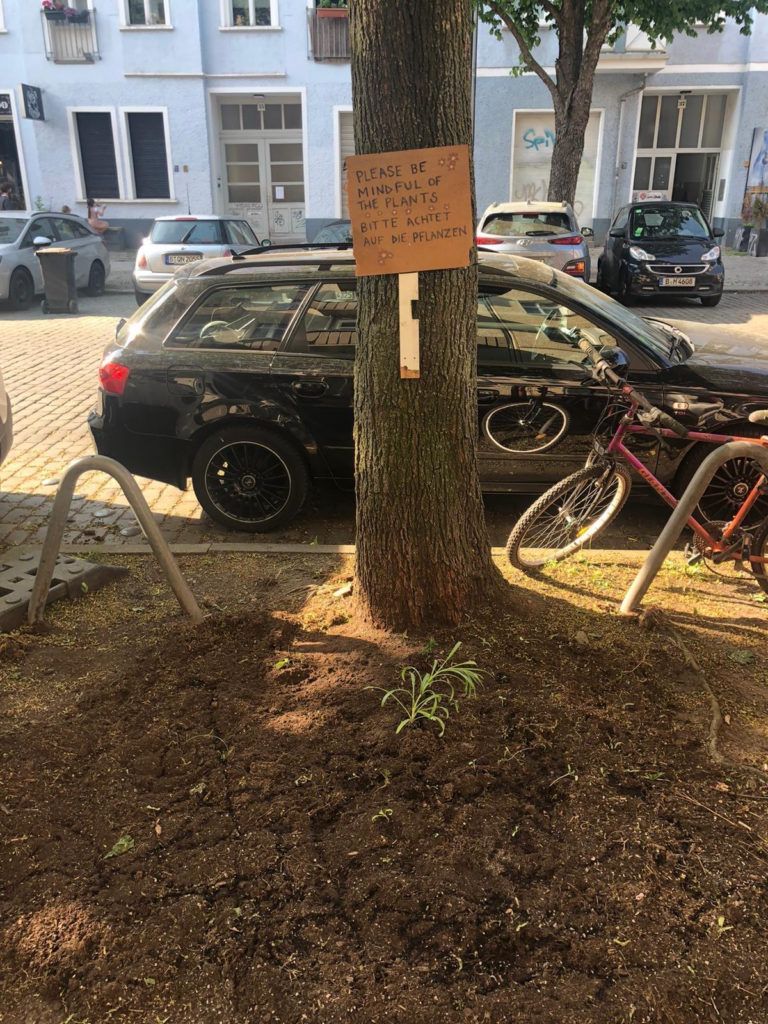
3. Fence, no sign (no photo yet)
And
4. Fence and sign (no photo of the side with sign and fence together)
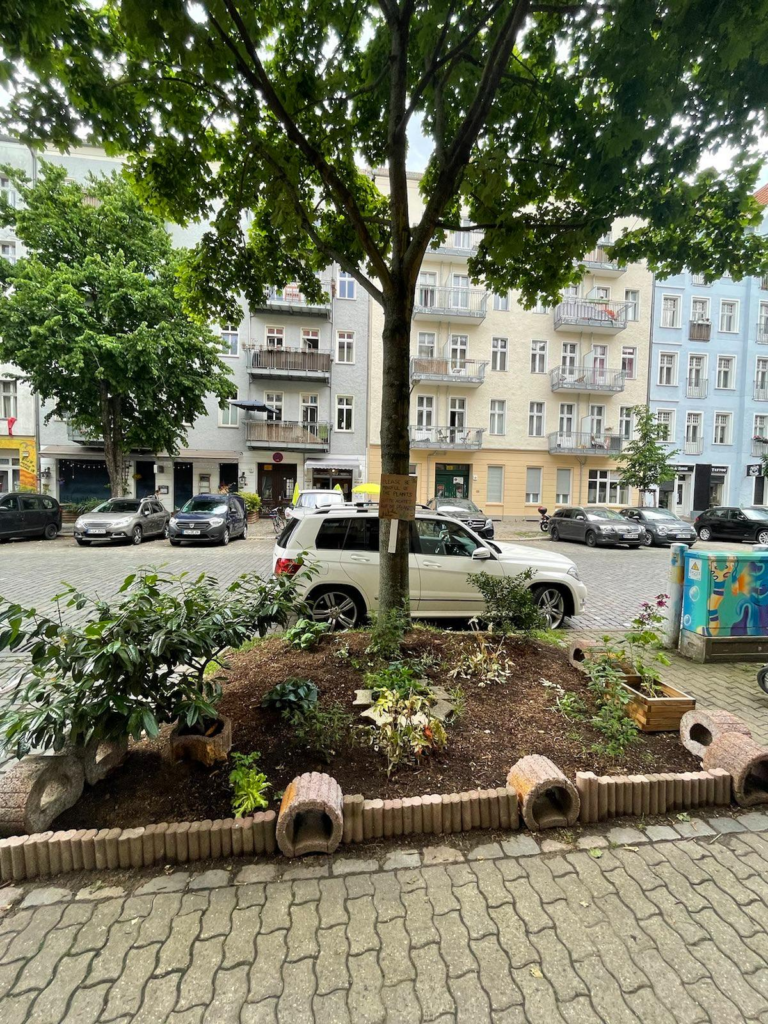
And elsewhere?
On Tempelhofer Feld, Cornelius and Simone have started to paint their garden red in late April.
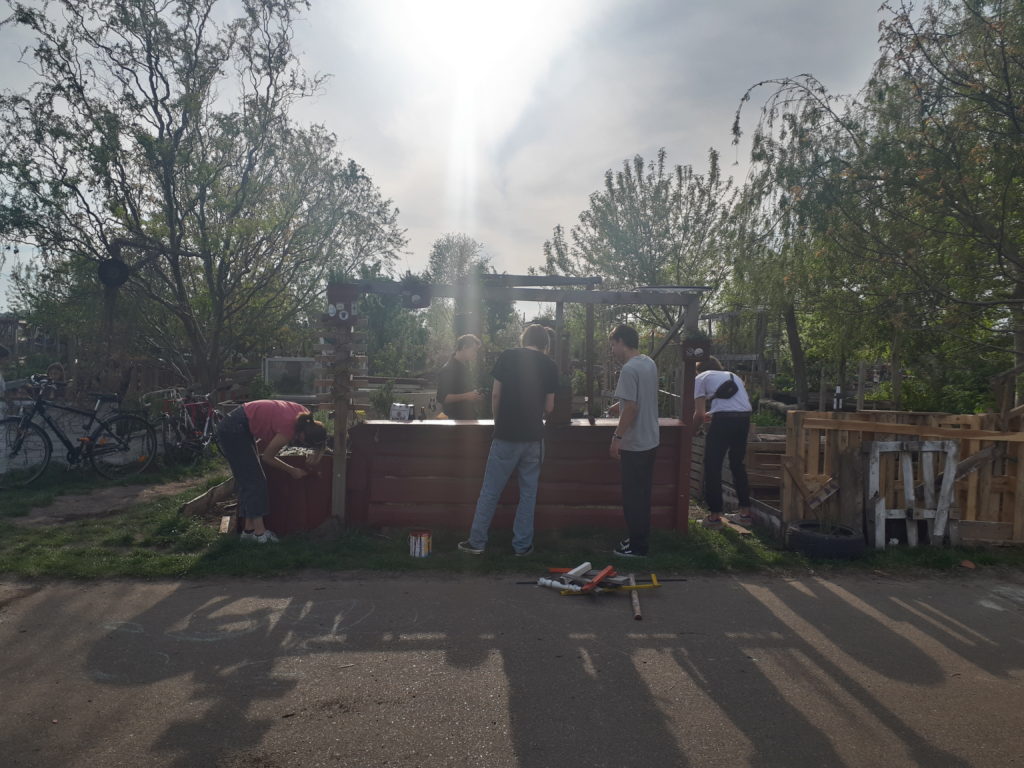
The idea was to see the plants growing from the beginning on so they bought seeds and planted them in the beginning of May.
With a team of Leuchtstoff and friends they decided where to plant and what to plant.
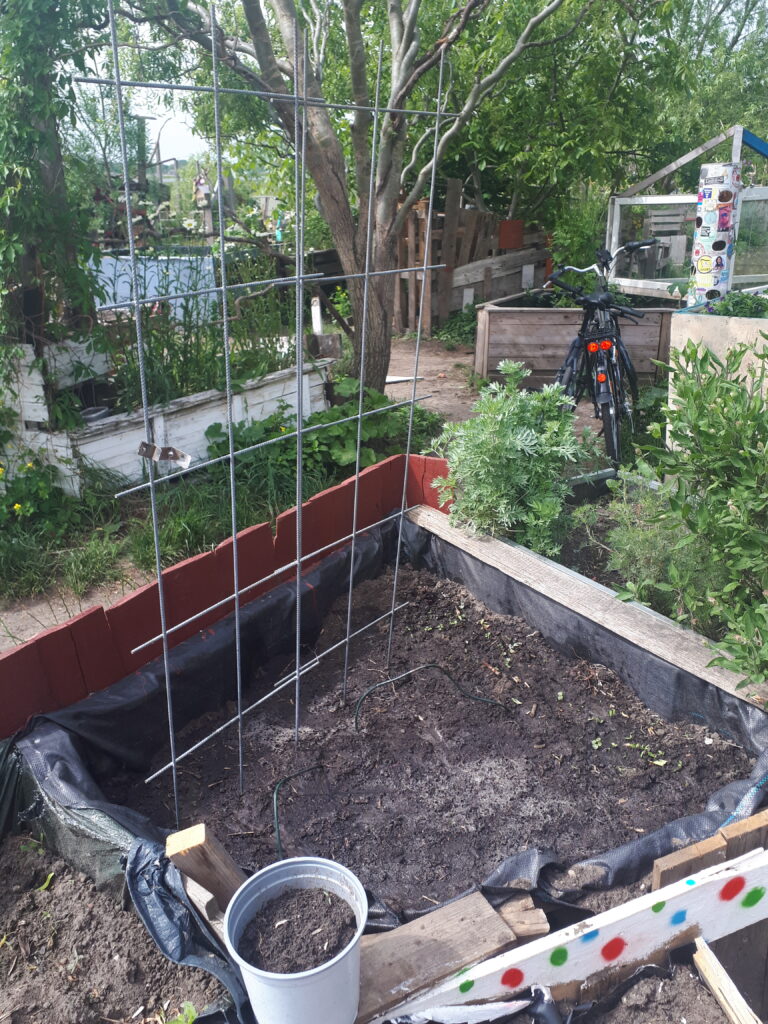
Below you can see their space, marked in red. The green dots are corn, the yellow ones are peas and later on, if there is space in between the plants, pumpkin will join them, which is marked in blue.
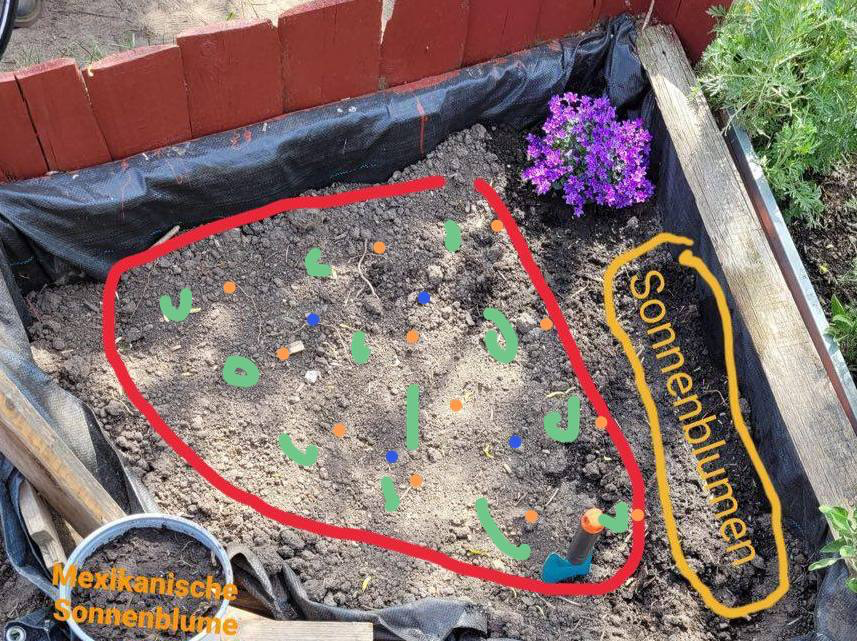
The bed is getting greener and greener – however Simone & Cornelous were wondering, whether the other plants inbetween are weeds (which would need to be removed) or not. Maybe one of you has an advice on that?
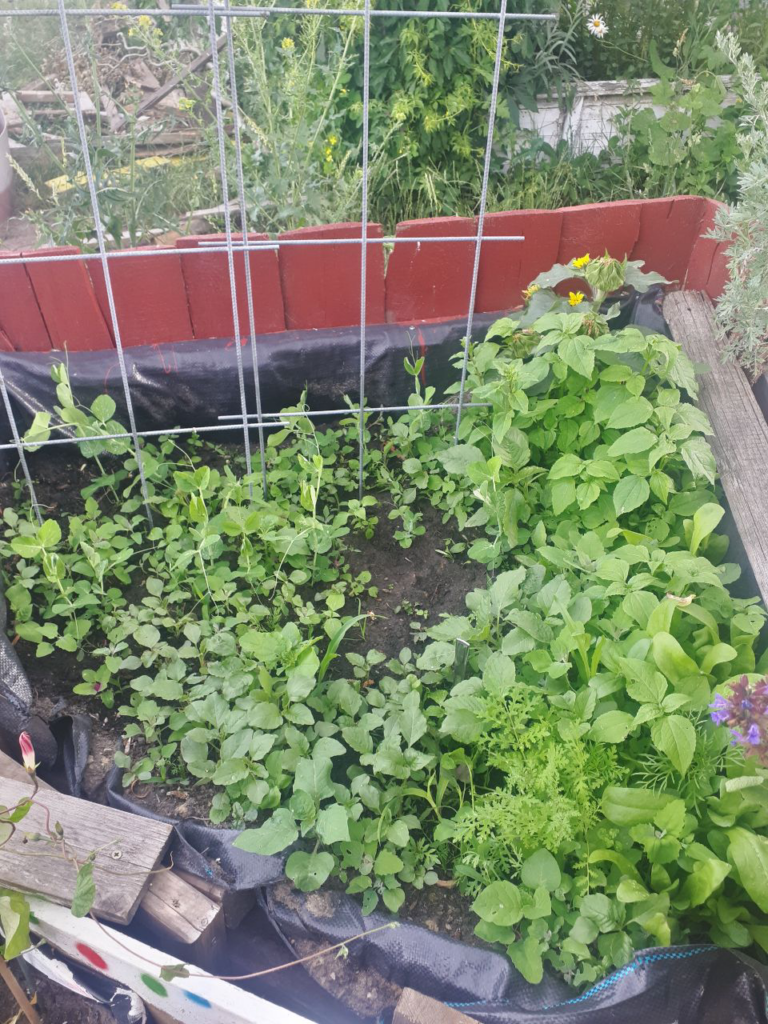
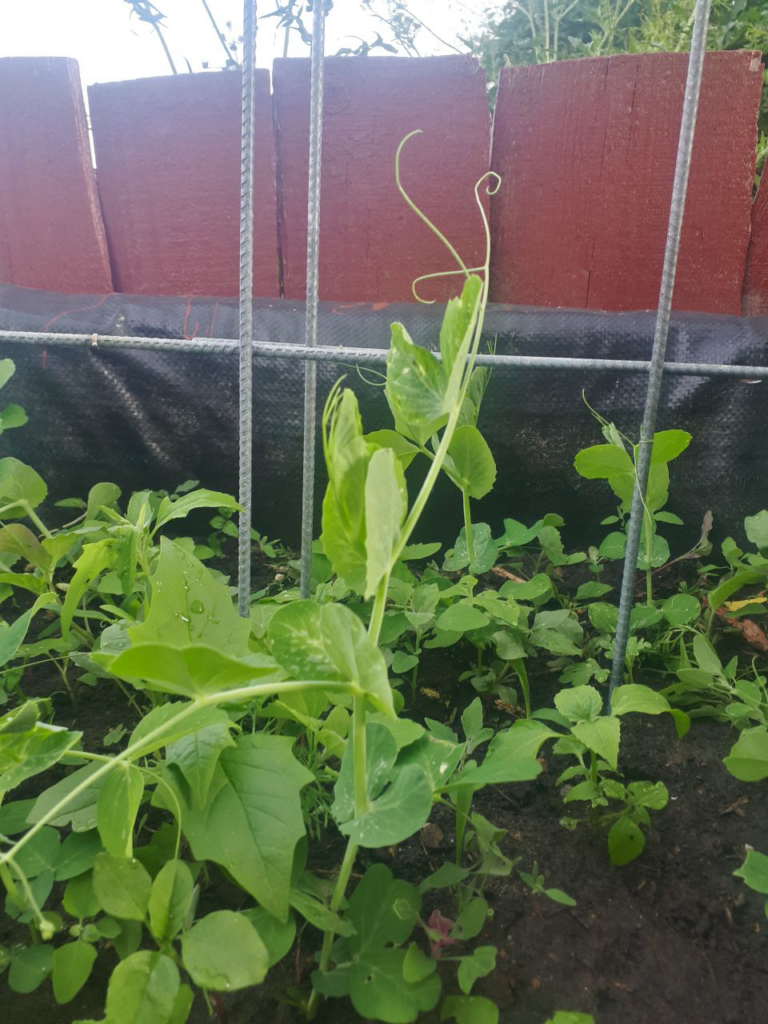
Many teams have reported that their „red“ plants are growing, blooming and ripening: strawberries, tomatoes, beetroot, raspberries.
For instance, Luisa’s and Cornelius‘ beetroot showed some noticable growth, visible in the pictures taken only one week apart below.
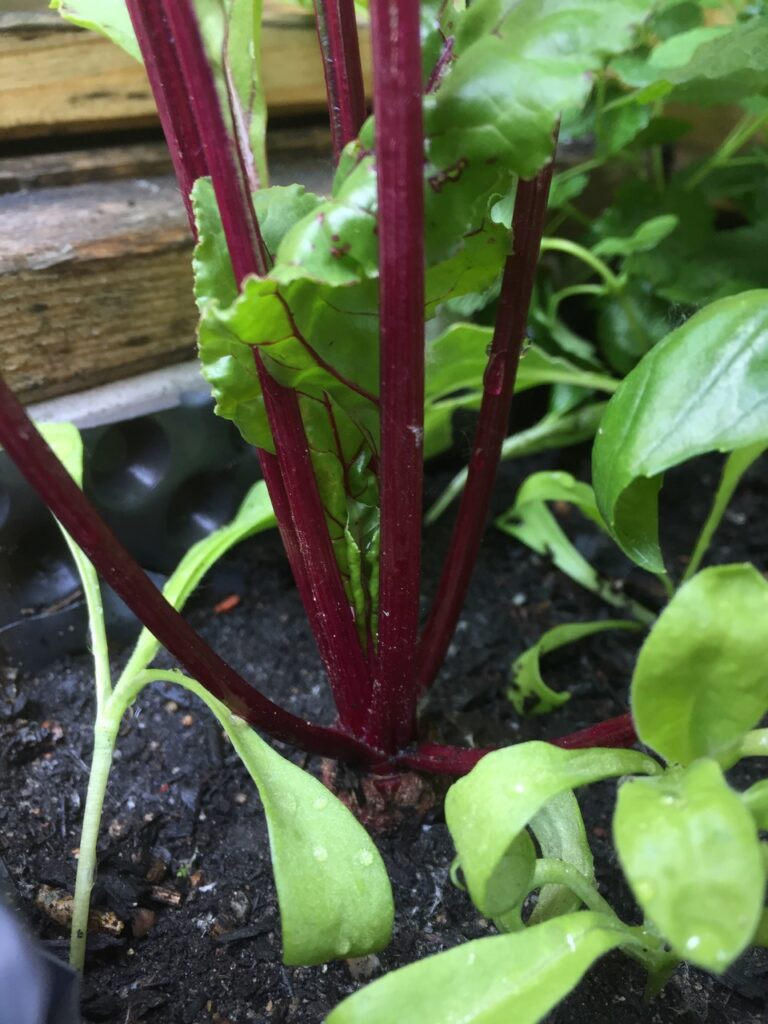
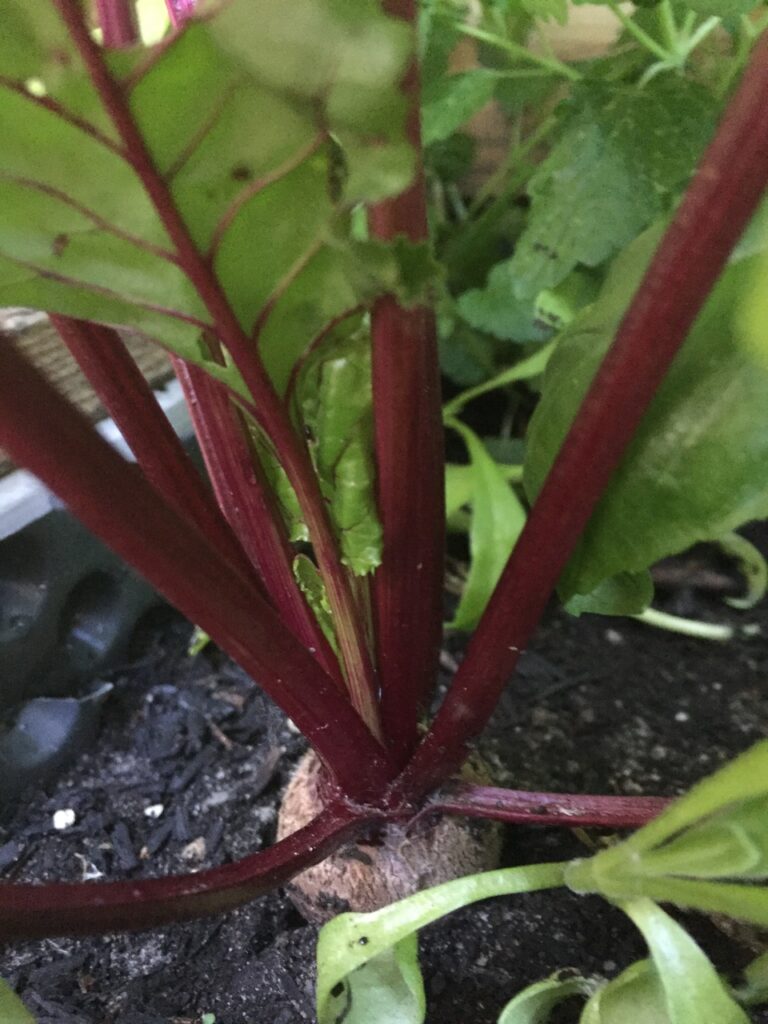
The same development could be seen by their kohlrabi and their TUmato developed well, too:
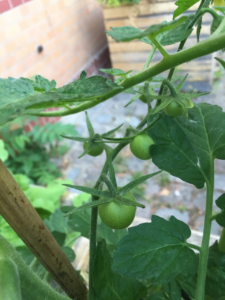
Excitingly, they spoted the first raspberries and strawberries in the beds of our neighbors, which could have been Ayami’s, Katharina’s and Meltem’s whose baby strawberries and TUmatoes you can see here:
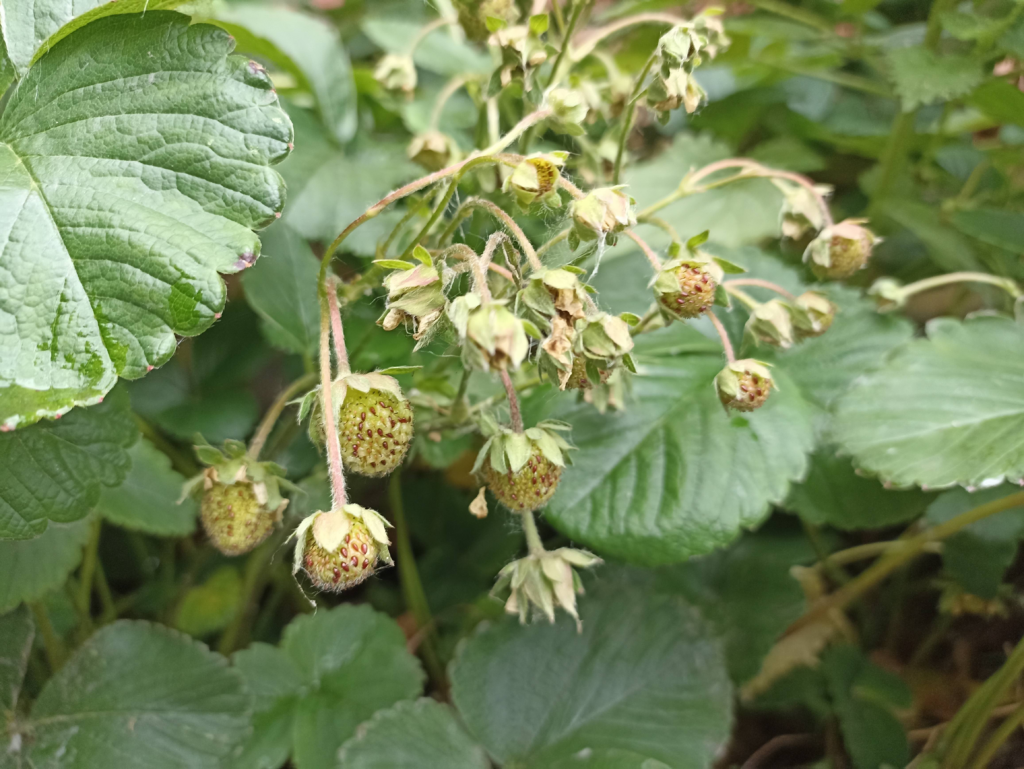
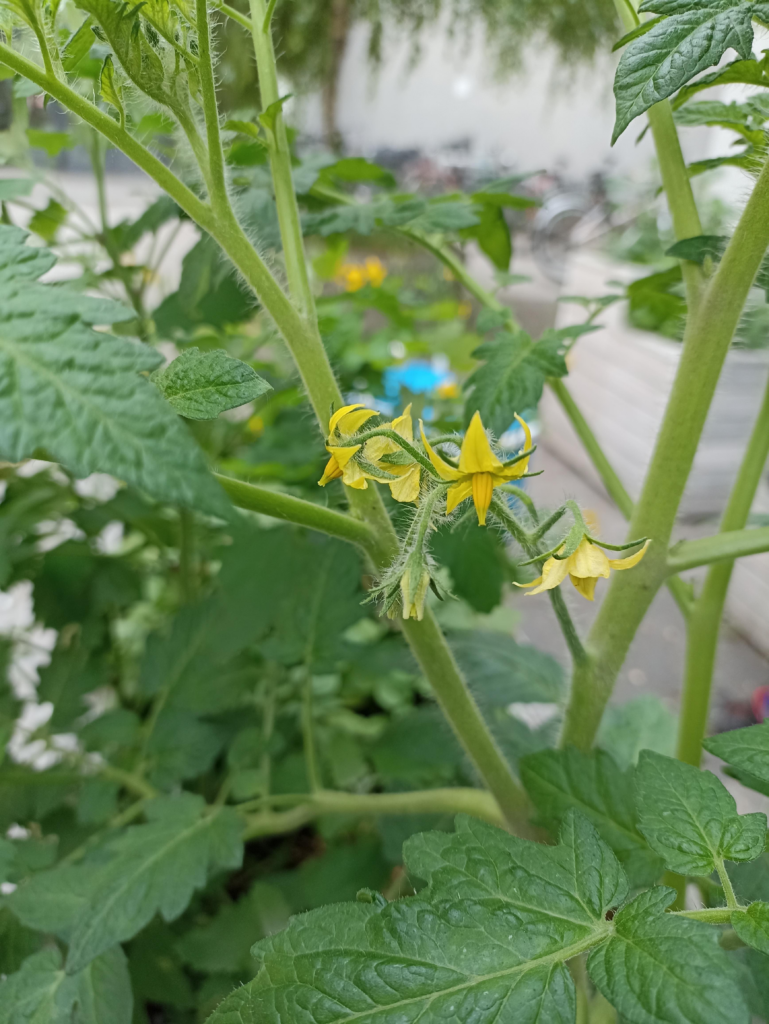
However, both tandems ran into some „issues“ as well: only one of Luisa’s and Cornelius‘ seeded beans has grown and they realized that it is slowly getting crowded in the bed with the beetroot and kohlrabi because the lemon balm is driven out. On the other bed, Ayami, Katharina and Meltem need to take the nettles out, but for that they need to bring the a proper pair of gloves.
Moreover, Simon has removed the unnecessary plants, probably weeds, and planted strawberries as well as a cucumber, as you can see in the following picture. Red seems to be in favor again, as he plans to add some chilis and tomato.
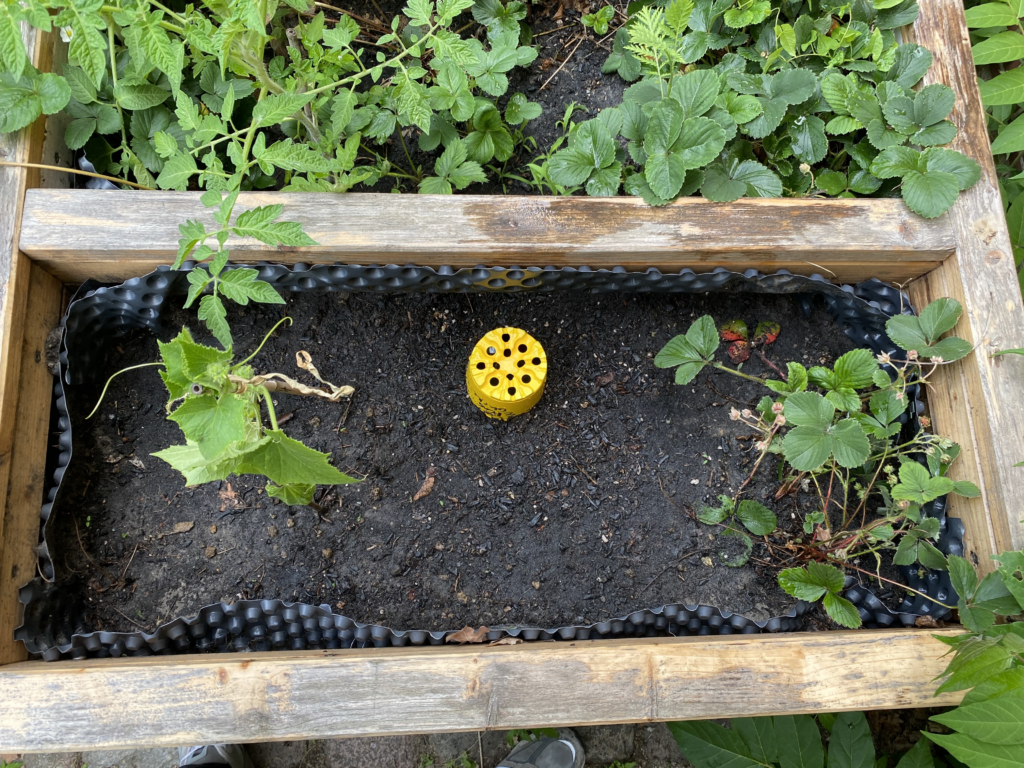
Lastly, Min Kim and Mario have planted red (and white) radishes, monks cress and „Einlegegurken“.
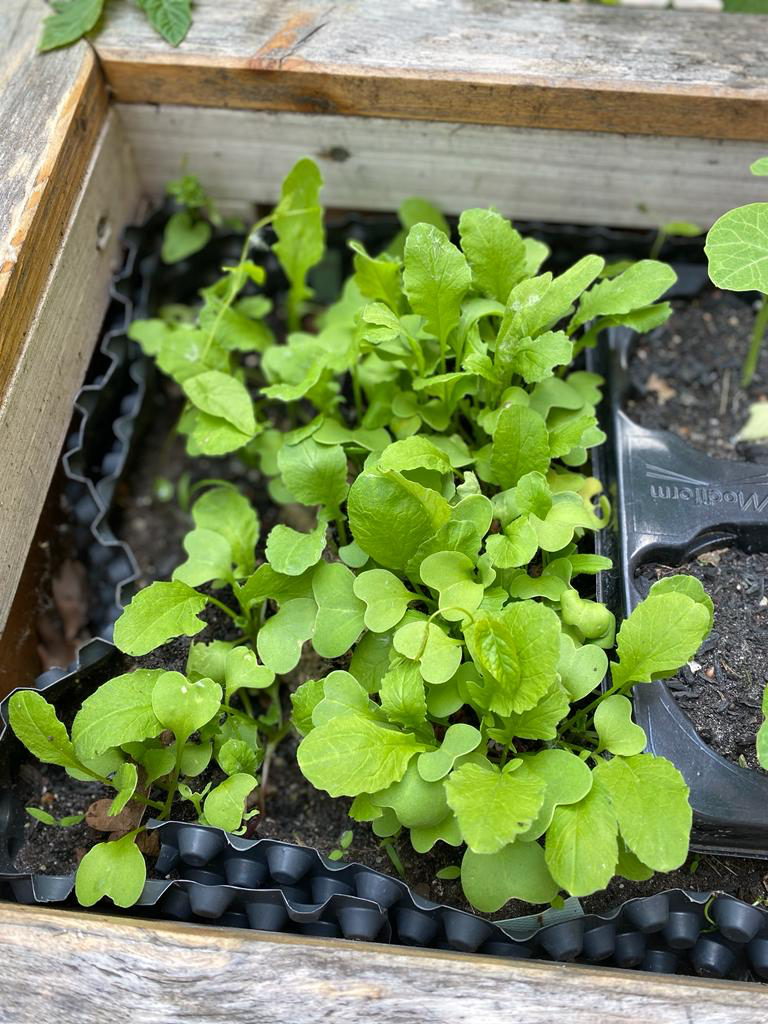
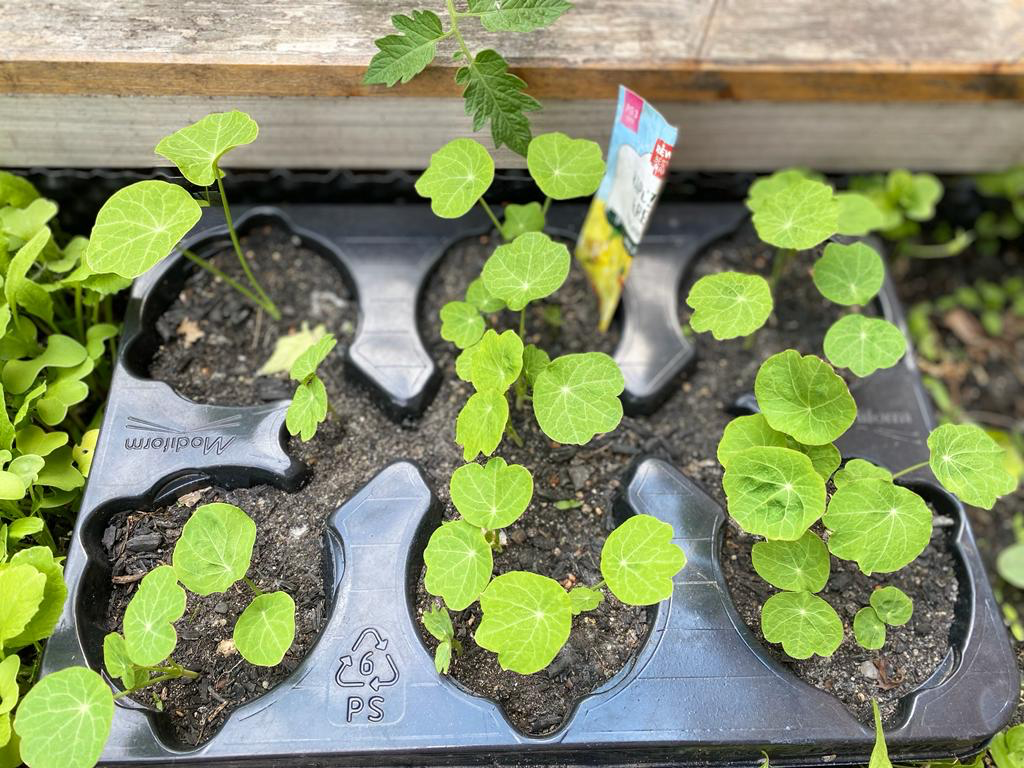
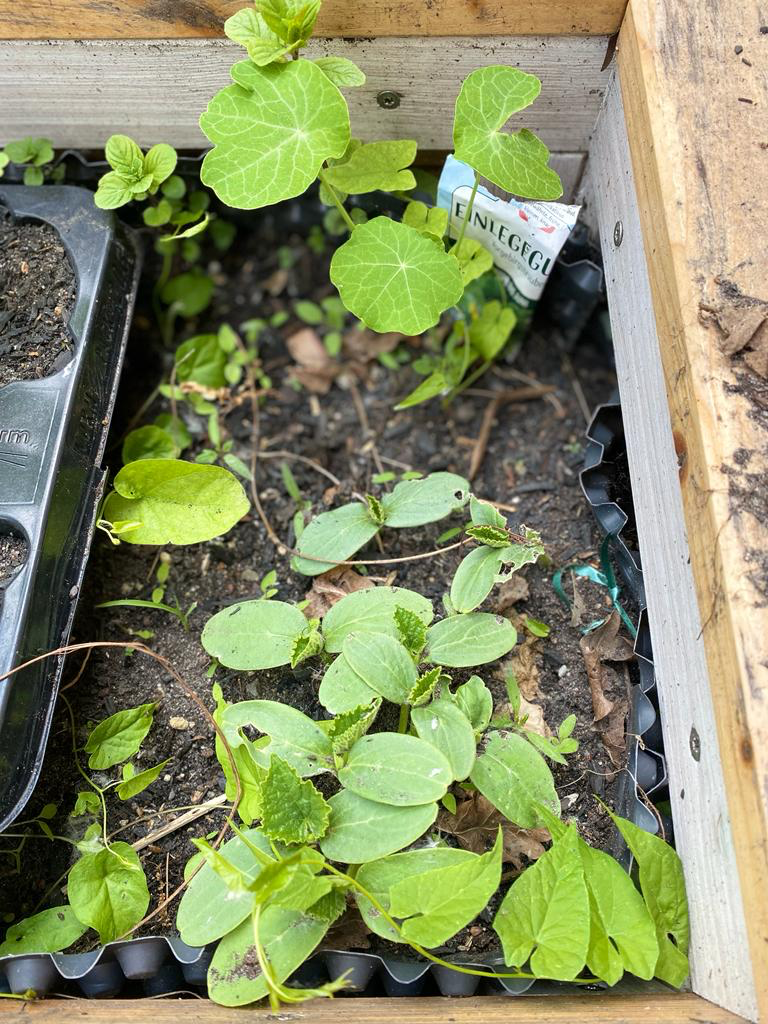
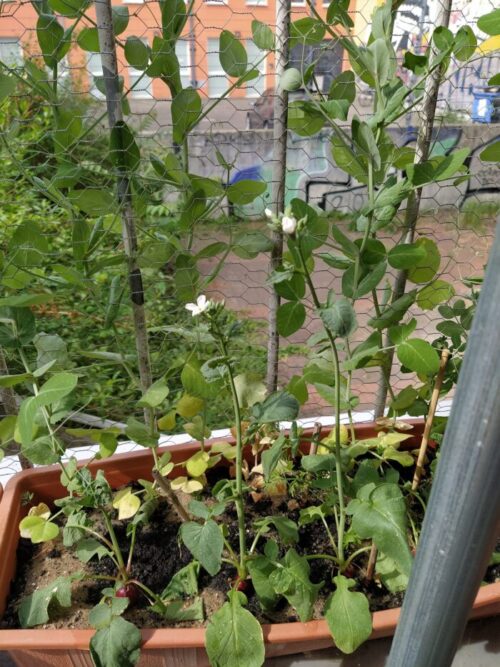
The field of plant protection is quite large. That’s why this article focuses on the measures one can take before a plant gets any kind of pest.
The best preventive plant protection is to keep the plant healthy and to stimulate its growth. Let’s have a look at the most important points.
1 Choice of site
Site and plant have to fit together. For example: Blueberries need acidic soils (most soils are only slightly acidic or neutral), mints prefer a quite humid soil and rosemary likes it dry. Not only the character of the soil but also the amount of sunlight, wind and the cardinal directions play an important role. Almost all crops need a lot of sunlight. Their preferred cardinal direction is south (southeast to southwest). Moreover, there are special cultivars of each plant. That means some cultivars of the same plant are more tolerant concerning shadow or humidity or aridity than other ones.
All in all, one can say that most crops need a lot of sunlight, a slightly acidic to neutral soil rich in humus and a good drainage.
2 Choice of cultivar
One should not underestimate the appropriate choice of cultivar. It’s not only that some cultivars are more tolerant against aridity or shadow than other ones. With the right choice you can harvest more and have less problems with pests. For example, some cultivars are tolerant or even resistant against special fungi like powdery and downy mildew (German: Echter und Falscher Mehltau), rusts (German: Rostpilze) and late blight at tomatoes and potatoes (German: Kraut- und Braunfäule). Other cultivars show a good resistance against some special viruses (e.g. mosaic virus) and bacteria (e.g. fire blight, German: Feuerbrand). This is really important because plants can infect each other like potatoes infect tomatoes with late blight. Some pests are also good survivors. If they bothered you one year they will also bother you the next year. Late blight can survive in potato tubers. Other pests survive directly in the soil or on leaves.
There are more advantages. Modern cultivars of cucumber, zucchini, melon and pumpkin, all part of the gourd family, are less poisonous than their ancestors. Normally, the gourd family produces a bittering agent called Cucurbitacin which protects them against insects. This bitter substance is also toxic for humans and can cause acute illness.
Or, look at cherries. Nowadays, they are pretty big. Their pip is much smaller than the fruit itself. They have a lot of pulp. Some are sweet, others sour. The wild form of a cherry is pretty small. The fruit consists almost of its pip and has almost no pulp. Its taste is ok but not that delicious.
Some crops like lettuce and cabbage have special summer cultivars that are tolerant against heat. Normally, the heat leads to bolting. That means lettuce and cabbage form long thin shoots and flowers (which is not desired). The summer cultivars stay compact and build leaves instead of shoots.
3 Planting and sowing
After the appropriate choice of site and cultivar be careful of planting/sowing distances. You can find them on the seed bag or on the label/sign of the plant pot. This ensures that the plants have enough space for their development. Also respect good and bad neighbourhood like mentioned in the last blog article.
4 Watering
It’s always better to water the soil than to water the plant. Wet leaves are prone to fungi. So, only water the plants‘ feet.
In a normal garden (bed) the watering should be done in the very early morning between 4 and 6 o’clock. That’s the coolest part of the night. The water flows directly to the roots and is not evaporated by the sun or the heat of the soil itself. If it’s not possible to water the garden that early one can also water in the late evening (9 p.m. or later). But this could be ideal conditions for mildew and slugs. In any case, the watering should not be done at noon because then the water evaporates immediately. That would be a real waste of resources.
The amount of water should saturate the soil but not wet it. That means it is better to give the plant a lot of water at once and then wait a few days before watering again. But please, don’t drown it. This stimulates the development of the roots and makes the plant more tolerant against heat and aridity. A watering plan is not as efficient as giving a plant water when it really needs it.
In hot summers, plants in containers or flower boxes need water every day, sometimes even twice per day. You can help yourself with a bottle turned upside down. Make a hole into the lid which has the size of a pea (the opening of the bottle itself is too big). Fill the bottle with water, close it with the prepared lid, turn it around and put it into the soil of the container. This only works if the soil is saturated with water beforehand. Otherwise the water will be gone immediately.
5 Fertilization
The three most important plant nutrients are nitrogen (N), phosphorus (P) and potassium (K). They are part of every compound fertilizer but in different amounts.
Nitrogen serves plant growth in general and the growth of leaves.
Phosphorus serves the development of flowers and fruits.
Potassium regulates the water balance and strengthens the plant tissue.
Other important nutrients are magnesium (Mg), calcium (Ca) and sulfur (S).
One distinguishes between organic and synthetic fertilizers.
Organic fertilizers take slowly effect because the microbes in the soil have to decompose them first. That’s their biggest disadvantage. One has to deploy them at an early stage. Moreover, it’s hard to say how much of which nutrient is set free. The dosage isn’t that precise. THE advantage is the sustainable enrichment of the soil with humus. That is what makes a soil fertile. It helps holding water and nutrients and makes the soil porous. It’s a closed circuit. Popular organic fertilizers are e.g. compost, vinasse, manure, bloodmeal, horn shavings or green manure. There are also some teas and brews made of plants or plant parts that strengthen and fertilize crops.
Synthetic fertilizers take effect almost immediately. Their dosage can be easily regulated as they come as a salt or liquid. The disadvantage is that the salts can accumulate in the soil or be washed out to the groundwater. The fertilizing effect lasts just a few weeks. It’s not enduring.
Some hints: Organic vinasse can be found at dm or Rossmann. You can use brews of nettle as a source of nitrogen. Banana peel is a source of magnesium and potassium. Coffee grounds is a good fertilizer, too.
6 More preventive measures
Nets, collars against slugs and flies (Schneckenkragen, Kohlkragen), insect traps with or without pheromones (Gelbtafeln, Blautafeln, Leimringe), buttermilk or baking powder against mildew and rust, water (sometimes with soap or oil) against aphids, nematodes against slugs.
Written by Katharina Joachimsmeyer
References:
https://www.berlin.de/pflanzenschutzamt/service/merkblaetter-ratgeber-und-broschueren/ratgeber/#garten
https://www.gartenjournal.net/garten-bewaessern-morgens-oder-abends
https://www.gartenjournal.net/npk-duenger
https://www.mein-schoener-garten.de/organische-duenger-0
https://www.bzfe.de/was-wir-essen-blog/blog-archiv/blog-archiv-2019/juli-2019/schneckenschutz-mit-durchblick/
https://www.mein-schoener-garten.de/blattlaeuse


